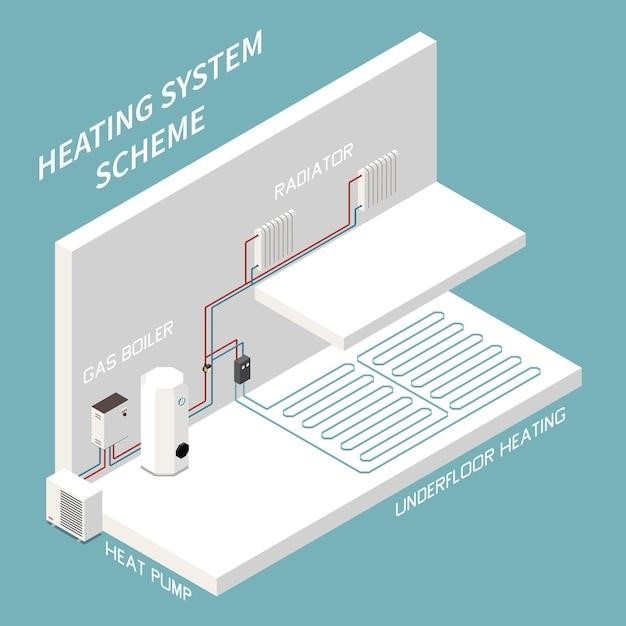A manual handling risk assessment template is crucial for workplaces. It aids in documenting potential hazards linked to tasks involving lifting, pushing, and carrying. Templates ensure compliance with safety regulations. They help identify risks, evaluate their severity, and implement control measures effectively, promoting a safer work environment.
Manual handling risk assessment is a systematic process. It identifies and evaluates risks associated with manual handling tasks. These tasks involve lifting, lowering, pushing, pulling, carrying, or otherwise moving objects by hand or bodily force. The primary goal is to prevent injuries and promote a safer work environment. A comprehensive assessment considers factors like load weight, posture, repetition, and environmental conditions.

The assessment helps employers understand the potential hazards employees face. It allows for implementing appropriate control measures; These measures can include modifying tasks, providing equipment, or training employees. Regular risk assessments are vital. They ensure the continued effectiveness of safety measures. They adapt to changes in work processes or equipment.
Risk assessment is a legal requirement in many jurisdictions. It protects employees from musculoskeletal disorders (MSDs). These include back pain, strains, and sprains. A proactive approach to manual handling risk assessment demonstrates a commitment to employee well-being. It also reduces the risk of costly workplace injuries and associated liabilities. It fosters a culture of safety and continuous improvement.
Legal Requirements for Manual Handling Risk Assessments
Manual handling risk assessments are not merely best practices; they are often legal mandates. Various regulations and laws worldwide require employers to protect their employees from risks associated with manual handling. These legal requirements typically include conducting thorough risk assessments to identify potential hazards. They also entail implementing appropriate control measures to minimize or eliminate those risks.
Compliance with these legal obligations is crucial. It prevents workplace injuries and avoids potential fines or legal repercussions. The specific requirements vary by jurisdiction. However, they generally emphasize the employer’s responsibility to provide a safe working environment. This includes assessing manual handling tasks. Also it means providing training, equipment, and procedures to reduce the risk of injury.
Employers must stay informed about the relevant laws and regulations in their region. Regularly updating their risk assessment practices is important. This ensures continued compliance. Failure to meet these legal requirements can result in significant penalties and damage to the company’s reputation. Proactive adherence to these laws demonstrates a commitment to employee safety and ethical business practices. It contributes to a positive and productive work environment.
Key Elements of a Manual Handling Risk Assessment Template
A robust manual handling risk assessment template should incorporate several key elements to ensure a comprehensive and effective evaluation. Firstly, it must include a detailed description of the manual handling task being assessed. This description should outline the specific movements, loads, distances, and frequencies involved. It also should include the working environment.
Secondly, the template should provide a section for identifying potential hazards associated with the task. This may include factors such as awkward postures, excessive force, repetitive movements, and unsuitable equipment. Thirdly, the template needs a risk assessment component. This evaluates the likelihood and severity of potential injuries. A risk matrix can be helpful for this.
Furthermore, the template should incorporate a section for documenting existing control measures. This includes equipment, training, and procedures already in place to reduce the risks. Additionally, there should be space to outline further actions. These actions are needed to minimize the risk. Finally, the template should include fields for the assessor’s name, date of assessment, and review date. This ensures accountability and facilitates regular updates to the assessment.
Identifying Manual Handling Hazards
Identifying manual handling hazards is a crucial step in preventing injuries. A thorough hazard identification process involves a systematic examination of all manual handling tasks to pinpoint potential sources of harm. Begin by observing workers performing their duties to identify awkward postures, repetitive movements, and heavy lifting. Note the weight, size, and shape of objects being handled, as well as the distances they are moved.
Consider the layout of the workspace and identify any obstacles or constraints that may increase the risk of injury. Evaluate the suitability of equipment used. This may include trolleys, hoists, and lifting aids. Assess whether workers have received adequate training on safe manual handling techniques and the proper use of equipment. It is also critical to review accident and incident reports. This helps to uncover recurring patterns and previously overlooked hazards.
Consult with workers who perform the tasks regularly, as they often have valuable insights into potential risks. Document all identified hazards in the risk assessment template, providing specific details about the nature of the hazard and its potential impact on workers’ health and safety. This information will form the basis for developing effective control measures.
Assessing the Risks Associated with Manual Handling
Once manual handling hazards are identified, the next critical step involves assessing the risks associated with each hazard. This assessment determines the likelihood of an injury or illness occurring and the potential severity of its consequences. Consider factors such as the frequency and duration of exposure to the hazard, the number of individuals exposed, and any existing control measures.
Evaluate the physical demands of the task, including the forces exerted, the postures adopted, and the distances involved. Assess the characteristics of the load being handled, such as its weight, size, shape, and stability. Consider the environmental conditions, such as lighting, temperature, and floor surface, as these can contribute to the overall risk.
Utilize a risk matrix or scoring system to assign a risk level to each hazard, based on its likelihood and severity. This allows for prioritization of risks and allocation of resources to address the most significant concerns first; Document the risk assessment process. This includes the methods used, the data collected, and the rationale behind the assigned risk levels. This documentation provides a clear record of the assessment and supports decision-making regarding control measures. Regularly review and update the risk assessment as needed, particularly when changes occur in the workplace or new information becomes available.
Who is at Risk from Manual Handling?

Manual handling risks can affect a wide range of individuals within a workplace. Identifying who is most vulnerable is crucial for implementing targeted preventive measures. All employees involved in tasks like lifting, carrying, pushing, or pulling are potentially at risk. Consider those whose jobs inherently require frequent or heavy manual handling.
New employees or those returning from extended leave may have a higher risk due to lack of experience or deconditioning. Individuals with pre-existing musculoskeletal conditions, such as back pain or arthritis, are also more susceptible to injury. Pay special attention to pregnant workers. Their changing bodies make them more vulnerable.
Age can also be a factor, as older workers may have reduced strength and flexibility. Temporary or agency workers may lack adequate training or familiarity with the specific manual handling tasks involved in the workplace. It is essential to consider individual capabilities, health conditions, and training levels when assessing risk. By identifying those most at risk, employers can tailor training programs, adjust work tasks, and provide appropriate equipment to minimize the likelihood of injuries and promote a safer working environment for everyone.
Existing Control Measures for Manual Handling
Before implementing new actions, it’s vital to assess existing control measures for manual handling. These measures are put in place to mitigate risks associated with tasks like lifting, carrying, pushing, and pulling. Start by evaluating engineering controls, such as mechanical aids like forklifts, trolleys, and hoists. Ensure these are in good working order and used correctly.
Next, review administrative controls, including safe work procedures, job rotation, and training programs. Are employees adequately trained in proper lifting techniques and risk awareness? Check if procedures are up-to-date and followed consistently. Assess the effectiveness of personal protective equipment (PPE), such as gloves, safety shoes, and back supports. Confirm they are appropriate for the tasks and readily available.
Evaluate workplace design factors, like layout and accessibility. Are walkways clear, and are storage areas organized to minimize unnecessary reaching or twisting? Consider the impact of environmental conditions such as lighting, temperature, and noise. Are these conducive to safe manual handling practices? Document all existing control measures and assess their effectiveness in reducing risks. This evaluation will highlight areas where improvements are needed and inform the development of further actions to enhance safety. Regular review ensures ongoing effectiveness.

Implementing Further Actions to Reduce Manual Handling Risks
Following the assessment of existing control measures, the next crucial step involves implementing further actions to reduce manual handling risks. These actions should target the identified hazards and aim to minimize the likelihood and severity of potential injuries. Begin by prioritizing the highest-risk activities and developing specific, measurable, achievable, relevant, and time-bound (SMART) goals.
Consider engineering controls such as introducing or upgrading mechanical aids like conveyors, lift tables, or vacuum lifters to reduce physical strain. Explore redesigning workstations to minimize reaching, bending, and twisting. Implement administrative controls, including enhanced training programs focusing on proper lifting techniques, ergonomic principles, and risk awareness. Ensure that employees understand the importance of reporting hazards and near misses.

Develop and enforce safe work procedures for specific manual handling tasks, detailing the steps to be followed and precautions to be taken. Encourage job rotation to reduce prolonged exposure to repetitive movements. Provide appropriate personal protective equipment (PPE), such as gloves with good grip, supportive footwear, and, if necessary, back supports. Regularly review and update risk assessments and control measures to ensure their continued effectiveness. Foster a safety culture where employees actively participate in identifying and addressing manual handling risks. Monitor the implementation of new actions and track their impact on reducing injuries and improving overall safety.
Reviewing and Updating the Risk Assessment
The manual handling risk assessment is not a static document; it requires regular review and updates to remain effective and relevant. A periodic review, ideally at least annually or whenever significant changes occur in the workplace, is essential. Changes might include new equipment, altered work processes, or modifications to the work environment. Any of these can introduce new hazards or alter the effectiveness of existing control measures.
Furthermore, a review should be triggered by any incident, accident, or near miss related to manual handling. Investigating these events can reveal shortcomings in the risk assessment or control measures. Employee feedback is invaluable in this process. Encourage workers to report any concerns or suggestions for improvement, as they are often best placed to identify practical issues.
The review should examine the effectiveness of implemented control measures, verifying that they are functioning as intended and adequately reducing risks. If necessary, adjust or introduce new controls based on the review findings. Document all changes made to the risk assessment, including the rationale for the changes and the date they were implemented. Communicate these updates to all relevant employees, ensuring they are aware of the revised procedures and precautions. Keeping the risk assessment current ensures a safe working environment.
Example Manual Handling Risk Assessment Scenarios
Consider a warehouse worker tasked with repeatedly lifting boxes of varying weights from a conveyor belt and stacking them onto pallets. A risk assessment should identify hazards like heavy lifting, awkward postures, and repetitive movements. Control measures might include providing mechanical aids like forklifts or pallet jacks, adjusting the conveyor belt height, and implementing job rotation to reduce strain.
In an office setting, imagine employees frequently moving heavy files or equipment. The risk assessment should address potential hazards like overreaching, carrying unbalanced loads, and working in confined spaces. Control measures could involve providing trolleys or hand trucks, reorganizing storage to minimize lifting distances, and training employees on proper lifting techniques.
A healthcare worker assisting patients with mobility faces risks of back strain and injury. The risk assessment should consider factors like patient weight, mobility level, and the availability of assistive devices. Control measures might include using hoists or transfer aids, ensuring adequate staffing levels, and providing training on safe patient handling techniques. These examples highlight the importance of tailoring risk assessments to specific tasks and environments to effectively mitigate manual handling risks.
Using a Risk Matrix for Manual Handling Assessments
A risk matrix is a valuable tool for evaluating and prioritizing manual handling risks. Typically, it plots the likelihood of an incident occurring against the severity of its potential consequences. For manual handling, likelihood could range from “rare” to “very likely,” while severity could range from “minor injury” to “major injury or fatality.”
Each cell in the matrix represents a different risk level, often color-coded (e.g., green for low risk, yellow for medium risk, red for high risk). By assessing a manual handling task, such as lifting heavy boxes, and determining its likelihood and severity, you can pinpoint its corresponding risk level on the matrix.
High-risk tasks demand immediate attention and control measures, while medium-risk tasks require further evaluation and possible intervention. Low-risk tasks may still warrant monitoring. This structured approach enables businesses to allocate resources effectively and focus on mitigating the most significant manual handling risks, contributing to a safer and healthier workplace for all employees involved.



